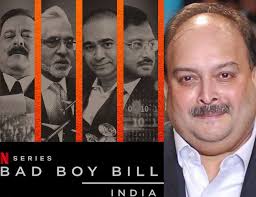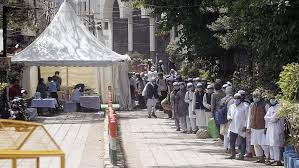Feature
Why charge customers for using ATM: HC asks RBI

New Delhi: The Delhi High Court Wednesday issued notice to the Reserve Bank of India (RBI) on a plea against RBI’s decision to impose a limit of five transactions per month from the customers’ own bank ATM and charging Rs.20 per transaction beyond it.
A division bench of Chief Justice G. Rohini and Justice P.S. Teji also issued notice to Indian Banks’ Association and State Bank of India along with the RBI and sought their response by Feb 18 on the PIL seeking directions to allow banking customers to make unlimited number of transactions free of any charge on own bank ATMs.
During the hearing, the court even raised the question about banks charging Rs.20 from its own customers after five transactions. “You (banks) are unnecessary taxing your account holders,” the bench remarked.
The PIL filed by a practising advocate Swati Aggarwal, through advocate Vivek Kumar Tandon, sought quashing of the Aug 14 RBI direction that limited the number of monthly free transactions at own bank’s kiosk to five beyond which banks can charge Rs.20 per transaction.
The directive became effective Nov 1 and has already been implemented by several banks, including the State Bank of India, the largest bank in India, said the plea.
RBI also imposed a limit of three transactions per month from ATMs of other banks, located in the six metro centres — Mumbai, New Delhi, Chennai, Kolkata, Bengaluru and Hyderabad.
The plea alleged that the directive has been issued at the behest of a few banks and the Indian Banks’ Association (IBA) who had approached the RBI seeking changes in the extant instructions regarding free transactions at other banks’ ATMs.
Levying of charges are highly “arbitrary and unjustified” besides being “discriminatory and against good banking practices and reforms and a backward move”, it added.
Advocate Tandon also argued that the RBI decision is against international practices in relation to use of own bank ATMs followed across the world.
In almost all modern economies of the world there is no cap on the number of transactions one can make on own bank ATM and unlimited number of transactions remain free of charge on their own bank ATMs, he added.
The counsel said: “Such an approach of restricting the number of free ATM transaction even on customer’s own bank ATMs, as adopted by the RBI through the impugned directive, are completely unheard of in international banking scenario and industry.”
The plea further added that the RBI decision is contradictory to its own earlier circular dated March 10, 2008, whereby RBI, while relying on international practices relating to usage of ATMs, had “justified and given directions allowing the free usage of ATMs for unlimited number of transactions on own bank ATMs”.
Entertainment
Meghalaya Reserves Legalized Gambling and Sports Betting for Tourists

The State Scores Extra High on Gaming-Friendly Industry Index
Meghalaya scored 92.85 out of 100 possible points in a Gaming Industry Index and proved to be India’s most gaming-friendly state following its recent profound legislation changes over the field allowing land-based and online gaming, including games of chance, under a licensing regime.
The index by the UK India Business Council (UKIBC) uses a scale of 0 to 100 to measure the level of legalisation on gambling and betting achieved by a state based on the scores over a set of seven different games – lottery, horse racing, betting on sports, poker, rummy, casino and fantasy sports
Starting from February last year, Meghalaya became the third state in India’s northeast to legalise gambling and betting after Sikkim and Nagaland. After consultations with the UKIBC, the state proceeded with the adoption of the Meghalaya Regulation of Gaming Act, 2021 and the nullification of the Meghalaya Prevention of Gambling Act, 1970. Subsequently in December, the Meghalaya Regulation of Gaming Rules, 2021 were notified and came into force.
All for the Tourists
The move to legalise and license various forms of offline and online betting and gambling in Meghalaya is aimed at boosting tourism and creating jobs, and altogether raising taxation revenues for the northeastern state. At the same time, the opportunities to bet and gamble legally will be reserved only for tourists and visitors.
“We came out with a Gaming Act and subsequently framed the Regulation of Gaming Rules, 2021. The government will accordingly issue licenses to operate games of skill and chance, both online and offline,” said James P. K. Sangma, Meghalaya State Law and Taxation Minister speaking in the capital city of Shillong. “But the legalized gambling and gaming will only be for tourists and not residents of Meghalaya,” he continued.
To be allowed to play, tourists and people visiting the state for work or business purposes will have to prove their non-resident status by presenting appropriate documents, in a process similar to a bank KYC (Know Your Customer) procedure.
Meghalaya Reaches Out to a Vast Market
With 140 millions of people in India estimated to bet regularly on sports, and a total of 370 million desi bettors around prominent sporting events, as per data from one of the latest reports by Esse N Videri, Meghalaya is set to reach out and take a piece of a vast market.
Estimates on the financial value of India’s sports betting market, combined across all types of offline channels and online sports and cricket predictions and betting platforms, speak about amounts between $130 and $150 billion (roughly between ₹9.7 and ₹11.5 lakh crore).
Andhra Pradesh, Telangana and Delhi are shown to deliver the highest number of bettors and Meghalaya can count on substantial tourists flow from their betting circles. The sports betting communities of Karnataka, Maharashtra, Uttar Pradesh and Haryana are also not to be underestimated.
Among the sports, cricket is most popular, registering 68 percent of the total bet count analyzed by Esse N Videri. Football takes second position with 11 percent of the bets, followed by betting on FIFA at 7 percent and on eCricket at 5 percent. The last position in the Top 5 of popular sports for betting in India is taken by tennis with 3 percent of the bet count.
Local Citizens will Still have Their Teer Betting
Meghalaya residents will still be permitted to participate in teer betting over arrow-shooting results. Teer is a traditional method of gambling, somewhat similar to a lottery draw, and held under the rules of the Meghalaya Regulation of the Game of Arrow Shooting and the Sale of Teer Tickets Act, 2018.
Teer includes bettors wagering on the number of arrows that reach the target which is placed about 50 meters away from a team of 20 archers positioned in a semicircle.
The archers shoot volleys of arrows at the target for ten minutes, and players place their bets choosing a number between 0 and 99 trying to guess the last two digits of the number of arrows that successfully pierce the target.
If, for example, the number of hits is 256, anyone who has bet on 56 wins an amount eight times bigger than their wager.





















